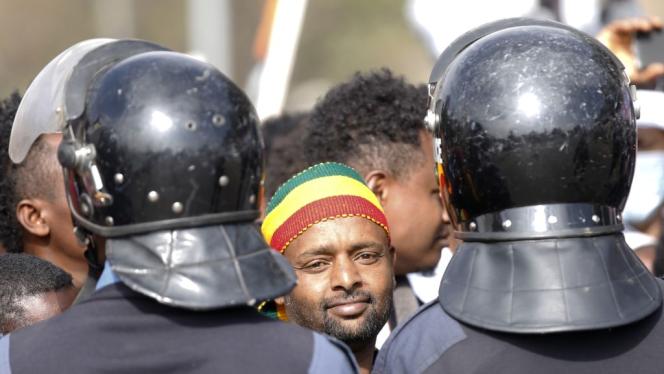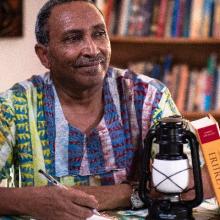Tuesday 7 May 2024
Adwa’s shadows: remembering native soldiers in the colonial abyss

Ethiopia’s triumph over Italy at Adwa is central to its national identity, but many Eritreans who were subjected to Emperor Menelik’s brutal retribution for serving Rome recall the darker side of the story
The 128th commemoration of the Battle of Adwa was observed in Ethiopia on March 2, amidst lavish festivities coinciding with the inauguration of the Adwa Museum, one of Prime minister Abiy Ahmed’s grand cosmetic projects.
The historical narrative of the Battle of Adwa, a cornerstone in Ethiopia’s national identity and pan-African prestige, often sparks debate among its citizens regarding the pivotal figures in the victory. For those who aren’t aware, Ethiopia decisively defeated an invading Italian force in 1896, blunting Rome’s imperial ambitions in Africa. After the battle, Jomo Kenyatta who would go on to become Kenya’s founding president, said “Ethiopia was the sole remaining pride of Africans and Negroes in all parts of the world.”
At its height, Italy occupied Eritrea, Ethiopia (for a brief period) and southern Somalia under a single administration called Africa Orientale Italiana. It also had seized Libya from the Ottomans in 1911. The Italian occupation during this period was notoriously harsh, particularly in Ethiopia and Libya, where they employed chemical warfare, destroyed villages, and perpetrated mass killings. The rise of fascism brought about apartheid policies in their east African colonies. Education under Italian rule was primarily focused on rudimentary arithmetic and training clerks to handle administrative tasks.
Despite the grandeur of the festivities, which celebrate the first major triumph of an African state over a European one, the harsh present-day realities of internal conflict, where the government employs drones and heavy artillery against its citizens in regions such as Oromia and Amhara, cast a shadow over the event. Further complicating the historical landscape is the plight of the Eritrean Askari (soldiers serving in the regular colonial army; the word originally comes from the Arabic word for soldier), who were captured during the battle. These African combatants, aligned with the Italian forces, faced severe discrimination.
During the Battle of Adwa, approximately 8,000 Askari were engaged in combat. Among them, around 2,000, mostly Eritreans, lost their lives, accounting for a 25% casualty rate. For those who weren’t killed a more brutal fate awaited them. About 800 survivors were liberated from Ethiopian captivity, but only after undergoing the amputation of their right hands and left feet, a fate that highlights that complicates the battle’s vaunted legacy. Half of those affected were Muslims from the coast or were Somalis who had also been recruited in the colonial army.
According to a medical report the charge of treason should have applied only to the Ethiopians, but not to the Muslim soldiers who never declared political or religious allegiance to Ethiopia, an emerging orthodox imperial state. Their only misfortune was the black colour of their skin. Many of those drowned themselves in despair in a deep water hole nearby. Despite these atrocities, approximately 300 of these survivors managed to return to Asmara. On the Italian side, the battle saw the participation of about 20,000 soldiers, with around 4,800, or 24%, succumbing to their injuries or getting killed during the fight.
Medical professionals who provided care for the wounded at a hospital in Asmara detailed their observations in a report published by the British Medical Journal in August 1896. These accounts describe how the victims, subjected to the severing of their right hand and left foot, were left to fend for themselves, facing the risk of bleeding to death. Survival was possible only for those who managed to halt the bleeding by repurposing part of their clothing, specifically a piece of their robe known as Futah. Typically, a similar form of mutilation applied to thieves would permit the cauterization of wounds with boiling melted butter to prevent blood loss; however, this mercy was denied to those branded as “traitors.” Remarkably, the resilience and determination of their spouses, who carried the injured for miles to safety upon learning of the dire situation, played a crucial role in saving many lives. These survivors were then transported to the closest Italian outpost.
In contrast, while a few Italian captives suffered extreme mutilation, including the removal of genital organs, the majority of Italian prisoners were spared any harm. The medical report indicated that Emperor Menelik II was against the practice of mutilation. Nonetheless, significant figures around him, including his wife Taitu, the Abune, and Tigrayan leader Ras Mengesha Yohannes, son of Emperor Yohannes IV, advocated for this severe punishment. The implementation of these punitive measures took place at the Abba Gerima monastery near Adwa. This episode of brutality has since cast a long shadow over the relationship between Eritrea and Tigray, Ethiopia.
In 2020, Prime minister Abiy Ahmed remarked on Ethiopia’s generous act of pardoning and releasing all Italian prisoners, yet he did not address the suffering endured by the Eritrean Askari, who were victims of both Italian colonialism and Ethiopian cruelty. The Askari, predominantly Eritreans, were pivotal to the Italian colonial military, valued highly and deemed the most capable fighters by Italy. In addition to Eritreans, individuals from various Ethiopian ethnic groups also served in this colonial army. Notably, at one time in Libya, the force included about 4,000 Eritreans and another 4,000 recruits from Ethiopia and few from Sudan, all of whom had been enlisted and trained in Eritrea, illustrating the broad involvement across the region in colonial military endeavours.
Until the early 1930s, joining the colonial army was a voluntary decision. However, once enlisted, Eritrean soldiers were required to serve abroad if called upon. Those deployed to Libya received double their standard pay in Eritrea. The initial group of Eritrean soldiers was sent to Somalia in 1907, followed by the first battalion dispatched to Libya in early 1912. Overall, the Eritrean colonial forces were known for their loyalty and effectiveness. From 1936 to 1941, all sixty thousand Eritrean colonial soldiers served outside their homeland. The exact number of Eritreans who lost their lives or were injured while fighting for Italy remains unknown. Families of those who perished in Libya and Ethiopia were compensated with a mere two months’ salary. A recent publication, Il coragio degli ascari, by Vito Zita, named 19,098 individuals, primarily Eritreans, awarded for their bravery during their service in the Italian army. But it also includes names from Ethiopia, Somalia and Libya.
In an interview in May 2017 with Eritrean TV, Eritrea’s president Isaias Afeworki made the controversial claim that there was no Italian colonialism in Africa, attributing the occupations of Libya, Ethiopia, and Somalia instead to the 150,000 Eritreans recruited by Italy, nearly suggesting that it was Eritreans themselves who had occupied these countries. During a recent trip to Italy for the Italy-Africa Summit in January, a visit he prioritised over attending either the IGAD summit preceding it or the AU Summit that followed, Isaias raised inquiries concerning the roster of Eritrean soldiers enlisted in the Italian military. This belated effort by Eritrea to acknowledge and identify these soldiers raises questions about the delay and underscores the necessity for Eritreans and Ethiopians to reconcile themselves with the realities of this conflict and avoid subsuming them into nationalistic hagiographies. It will help us draw lessons from the past to forge a path forward towards good neighbourliness.






